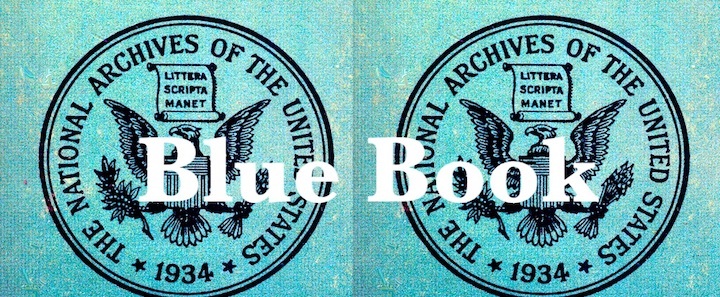
October 14, 1957 Radar-Visual case
This case was presented by Dr. James McDonald as a convincing radar-visual UFO case. However, he seems to have ignored some basic problems. It is true that he destroyed the USAF’s explanation for the case but he did not consider all the possibilities in his presentation.
Project Blue Book’s case file and conclusion
The events that night started just before 1900 on the 14th of October. A tower operator saw a stationary bright light at a bearing of 210 degrees magnetic (225 true). It faded and then reappeared a little to the north and slightly lower in elevation. It faded again and, once again, reappeared slightly north of the previous position and lower in elevation. For the most part the object was white but there seemed to be a hint of blue.
An S2F sub-hunter aircraft was about to take off and the controller directed it towards the object. The pilot saw the object prior to take off and proceeded towards the object at an altitude of 200 feet after taking off on Runway 29. The pilot, thinking the object was close and near Point Loma, hoped to get behind the object and silhouette it against the lights of San Diego. Once airborne and ap- proaching Point Loma, he quickly discovered that the object was not in front of him but on his right wingtip and rapidly accelerated away. The pilot turned west towards a bearing of 230 degrees magnetic (245 true). At this point the radar had finished warming up and the operator reported a target ahead at 17 miles and above the plane.
The pilot reported the sky was clear but there were low clouds close to the horizon. The stars were dim compared to the object they were following.
The plane slowly ascended to an altitude of 4500 feet. At that point the radar target was 12 miles ahead. The object then moved rapidly to the right 10 degrees. The pilot changed course to 240 degrees magnetic (255 true) and accelerated in attempt to close with the target. They closed to within 10 miles according to the radar but, after that, they could not close the distance despite ac- celerating and decelerating. The object then moved to the left 20 degrees at an azimuth of 220 degrees magnetic (235 true). After the radar indicated they were closing to 8 miles, the pilot chose to climb to 8000 feet.
Between 40 and 50 miles from Point Loma, the object disappeared off of radar and the light faded. Within a short period of time, the light reappeared visually but did not reappear on radar. They pursued to a distance of 58 miles from Point Loma when the object faded away at a bearing of 230 degrees magnetic (245 true).
Project Blue Book wrote on the record card that the object being pursued was the star Arcturus and the radar returns were due to an inversion or weather. They also checked off “possible balloon” on the record card.
Dr. McDonald’s case2
Dr. James McDonald did not like Blue Book’s evaluation. He correctly points out that Arcturus fails as an explanation because Arcturus was at a true azimuth of 290 degrees (275 degrees magnetic), which is too far away from the position of the object. He also criticized the weather/inversion explanation for the radar returns because Blue Book had no data presented for this conclusion and it did not seem possible that it could produce the radar returns described.
My analysis and explanation
As noted in my Blue Book summary, I concluded the optical sighting was of the planet Venus, which was a brilliant -4.1 magnitude object at a bearing of 223 degrees magnetic. I think there is good reason to conclude this. Examine the following table regard- ing the sighting and the positions of Venus:

The headings/bearings for the sighting all seem to fall within the same range. Despite the pilot reporting the shifting position of the object back and forth, it seems that the object always came back to a bearing of 230 degrees magnetic (245 true). This was very close to the bearing of Venus.
The pilot remarked that there were low clouds towards the west, which would explain why it was seen to fade and then reappear. The most important thing to mention is that not once is the planet Venus mentioned by the pilot or tower operator. They should have seen it AND the object. Instead, it was as if Venus was not present and the only thing visible was the light. That should be convincing evidence that Venus probably was the object that was pursued.
The S2F’s track was that he departed on runway 29 and had to turn to port in order to fly down the channel in an attempt to get the object between the plane and the lights of San Diego. After completing his banking turn to port, and leveling off, the pilot expected to see the object in front of him. Instead, he saw the object towards the southwest off his starboard wingtip. He concluded that the UFO had suddenly accelerated away from Point Loma towards the southwest. He now began his pursuit on a 230 degree magnetic bearing (245 true azimuth).
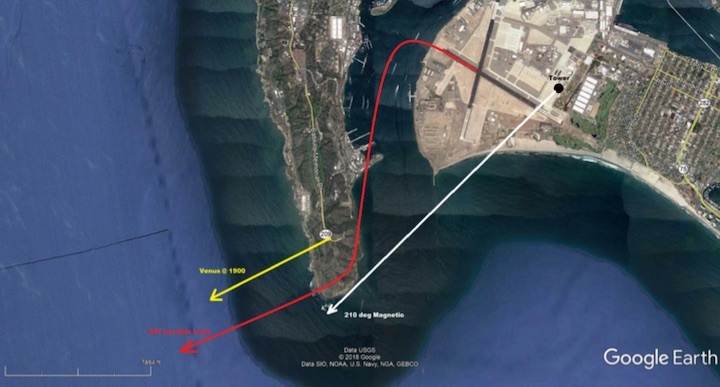
The radar returns are not as easy to explain. It is important to note that the AN/APS-38 radar was in a retractable radar dome that hung below the belly of the aircraft.3 The aircraft was designed to hunt submarines, which means the radar was built primarily to detect surface targets below the aircraft. I am sure it could track aircraft but how well could it do so?
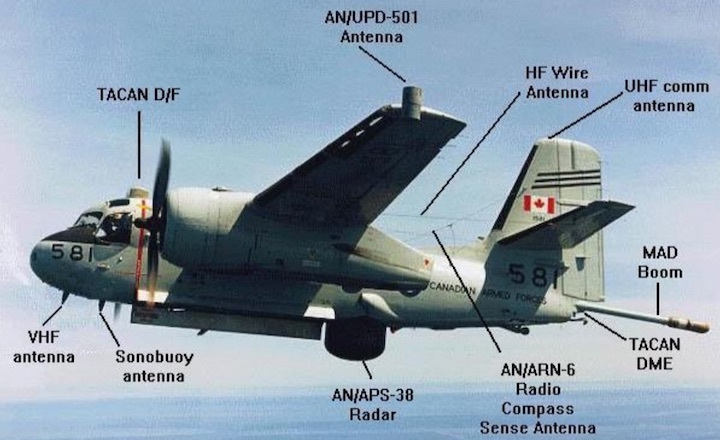
Both McDonald and the USAF did not contain any radiosonde data for their evaluations. I checked the radiosonde database4 and found that San Diego had launched a balloon at 0000Z (three hours prior to the event). The data indicates that there was a temperature inversion around 7500 feet. It does not appear severe enough to produce trapping/ducting but it would have resulted in refraction of radar waves and could possibly produce false targets.
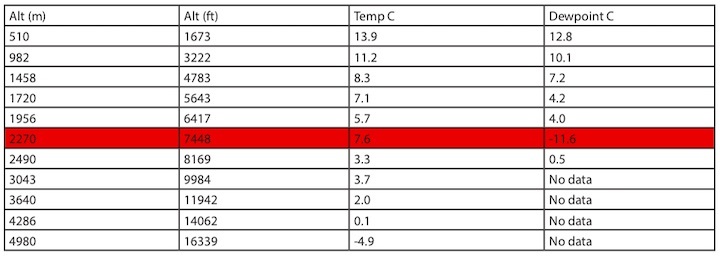
t seems possible that this might have played a role in generating potential false radar returns. It is difficult to say without knowing more about the radar and conditions under which it was operating.
Missing in all of this is the fact that no nearby Navy or USAF radars picked up this target. If North Island did not have an air search radar, naval ships at sea would have.
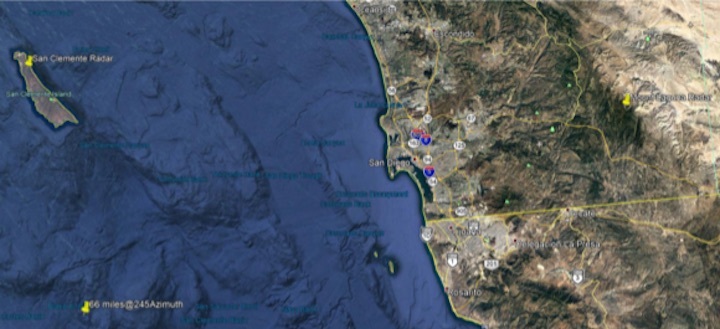
The USAF had a radar site about 50 miles east of North Island on Mount Laguna.5 The AN/GPS-3 radar (A
modification of the AN/FPS-8) operating there, with a range of about 220 nautical miles, should
have detected an intruder. The last known location of the UFO would have been about 50 miles
south of San Clemente Air Force Station6, which also had an AN/GPS-3 search radar. The lack of
any reports indicates these various radars either did not detect the UFO or did not report it. The
fact that the only radar that reported detecting this target was the S2F pursuing it indicates the
target registered may have been isolated to that particular radar unit and may have not been an actual physical object at all.
Conclusion
Venus seems to be the primary culprit in this sighting. It is rather frustrating that McDonald and the USAF never bothered to look to see if any bright astronomical object was in the vicinity of the target. It is equally frustrating that nobody seemed interested to see what the actual atmospheric conditions were before proclaiming there was, or was not, an inversion that evening. While somebody at Blue Book seemed fixated on Arcturus, McDonald appeared too busy trying to prove the USAF wrong. In both instanc- es, there was a failure to do nothing more than a cursory examination.
Quelle: SUNlite 4/2019

